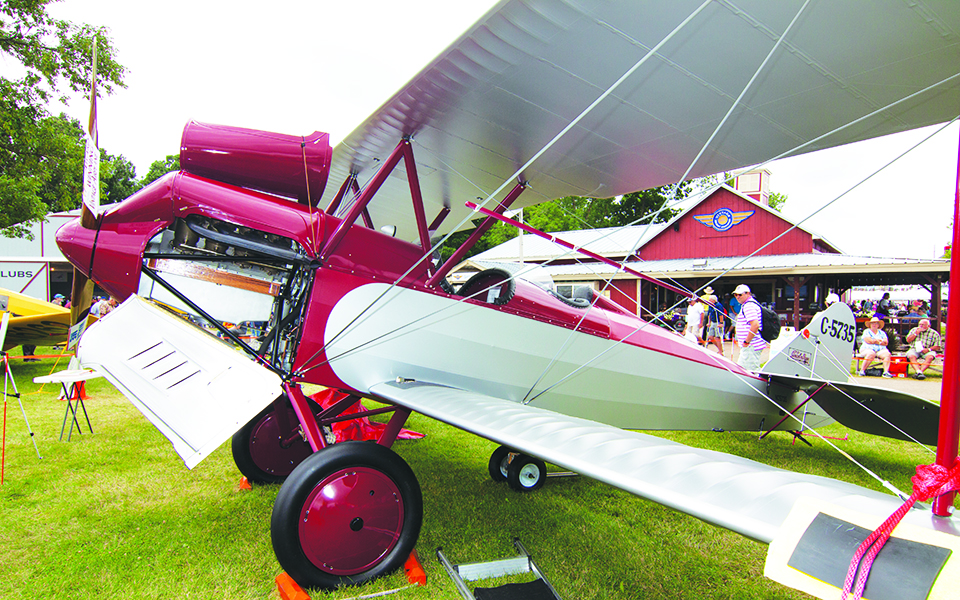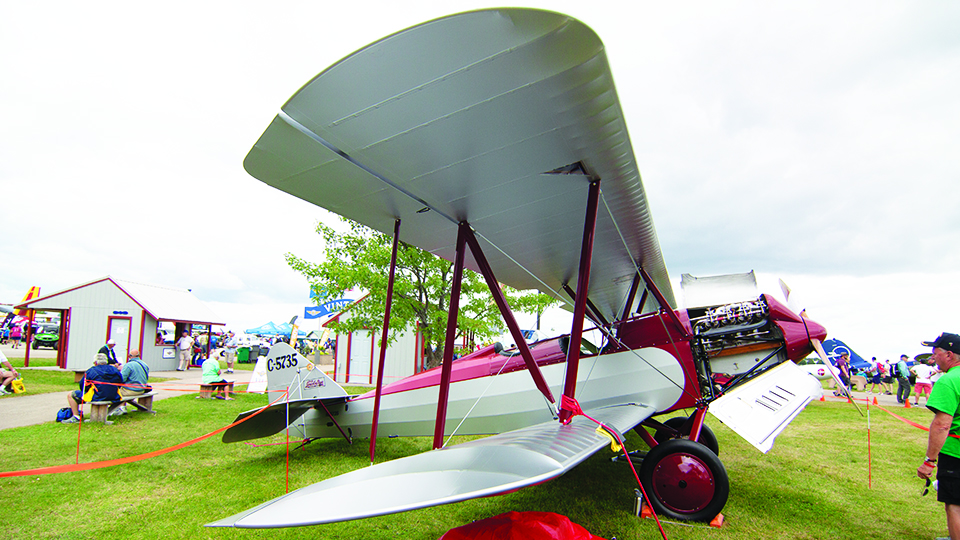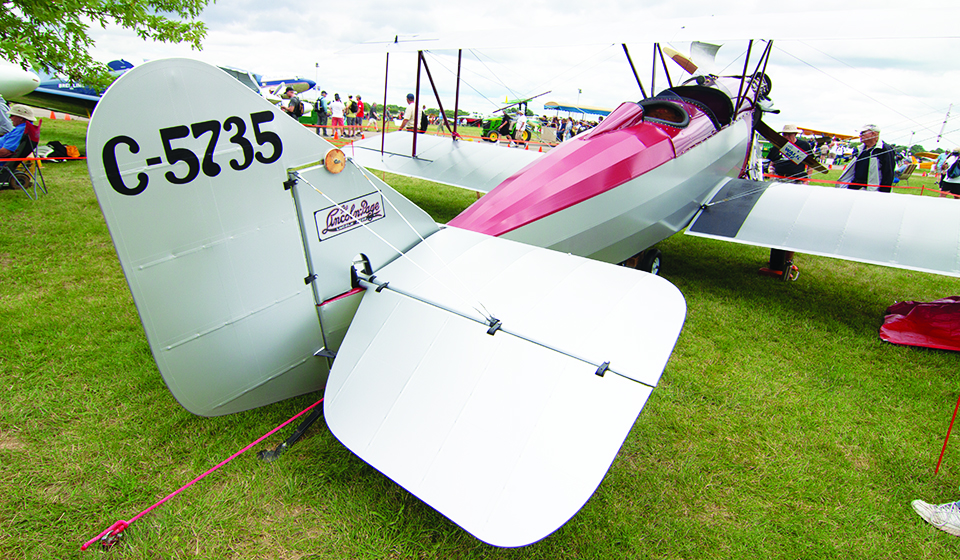Low-Time Lincoln-Page Flies Again
Restored historical beauty on display near VAA Red Barn
By Randy Dufault
July 26, 2018 - For reasons history may never know, Chuck Balling never repaired the Lincoln-Page LP-3 biplane he damaged in a takeoff accident a year and about 60 hours of flying time after purchasing it new in 1928. Disassembled in its damaged condition, he just stored the pieces in and around a chicken coop on his property.
But the Lincoln-Page has been resurrected, and the low time, silver and maroon bird flew to EAA AirVenture Oshkosh 2018 and is parked just east of the VAA Red Barn.
“It is a special thing to have it here,” said the plane’s restorer, Greg Heckman of Brodhead, Wisconsin.
“What I want to point out is that I didn’t bring it here for any recognition for me. I brought it here because this poor old girl has been waiting 89 years to fly again, and she deserves her day of glory, and what better place for her to get her day of glory than here at Oshkosh. And to have all these people appreciate it for what it is.”
Greg acquired the plane’s parts from Eric “Andy” Anderson. Andy had purchased it from Chuck in 1966, but never got a restoration project underway.
After completing a 1946 Funk B85C project, Greg got started on the Lincoln-Page.
“All the drawings were supposedly lost in a flood at some point in the factory’s life so there are no drawings,” Greg said. “But fortunately, even though the parts were in deteriorating form, there was enough there that I could duplicate everything I needed.
“There’s nothing challenging about [restoring] an airplane like this. It is a very simple airplane; it just requires a tremendous amount of time.”
One key component damaged beyond repair in the accident was the radiator for the liquid-cooled OX-5 V-8 engine. Andy had contacted the cooler’s original manufacturer shortly after he acquired the project, who, luckily, was still in business. Amazingly, a longtime employee recalled where some of the original core material was stored and agreed to construct a brand new radiator from the original drawings.
The LP-3 never was a terribly popular airplane, although it was economical.
“When this airplane was built in 1928 it was really already an antiquated design,” Greg said. “There were much more advanced and sophisticated airplanes out there.
“That OX-5 engine was already 10 years out of production,” he said. “But companies were still using them up until 1930 because they could buy them brand new in a crate for $250. They were cheap; parts were readily available, so really it is kind of an antiquated design and engine configuration for a brand new airplane being made in 1928.”
Originality is important to Greg, and the restored craft reflects it.
“I had a lot of people tell me you need to put brakes on it, you need to put a tailwheel on it, and my reply is that this airplane is too historically significant to do that,” Greg said. “I will deal with no brakes. I’ll deal with the tail skid. I didn’t want to change history here by putting something like that on it.”
The classic configuration does limit the airplane to only taking off and landing on grass runways.
Greg did say that there are two concessions to modernity. One is a modern gascolator. The original was not repairable and, in Greg’s opinion, is of a design that is a safety concern.
The other concession is a well-hidden, mandatory emergency locator transmitter.
Greg has no specific plans for the plane other than fly it for fun, give rides, and let folks enjoy it as a piece of history.



